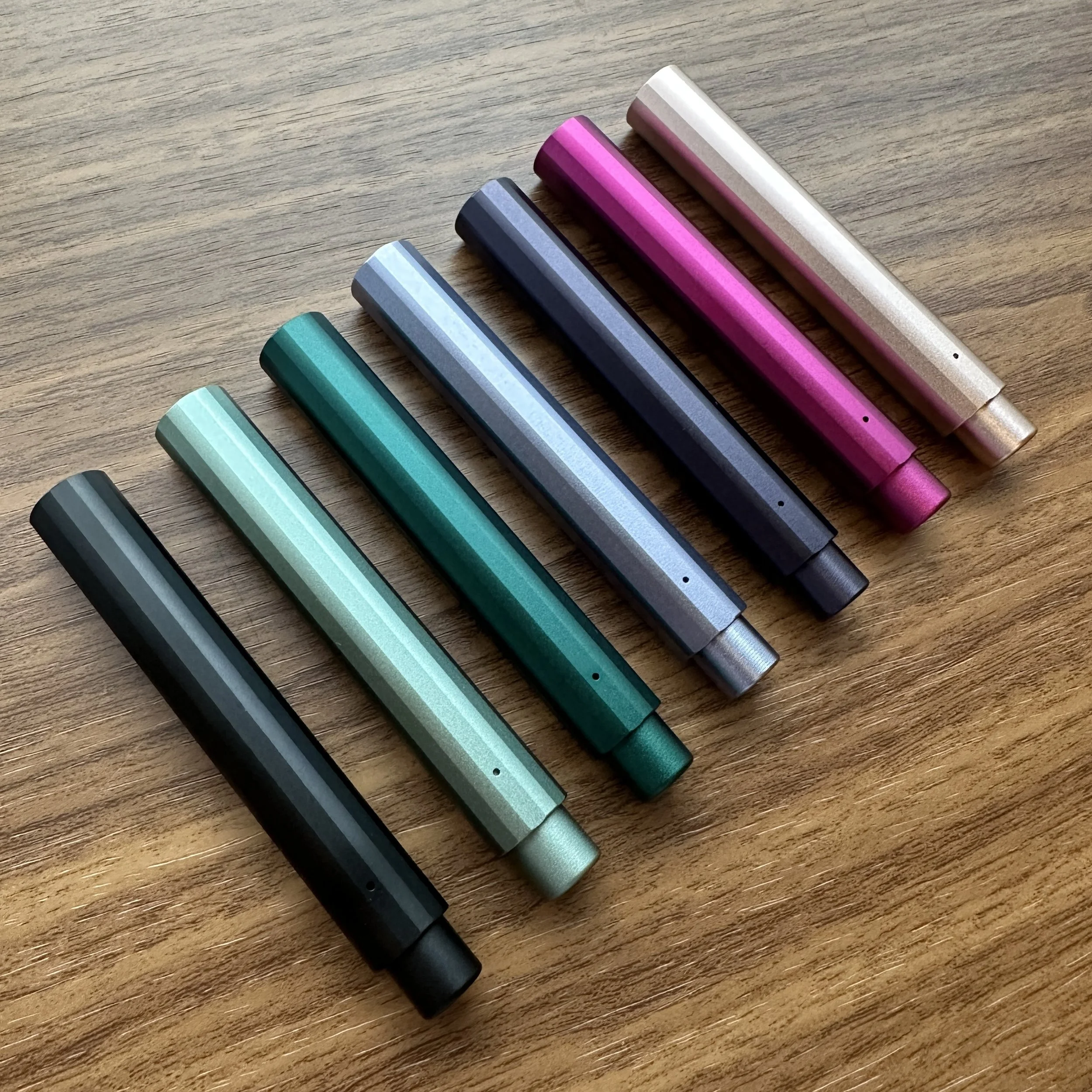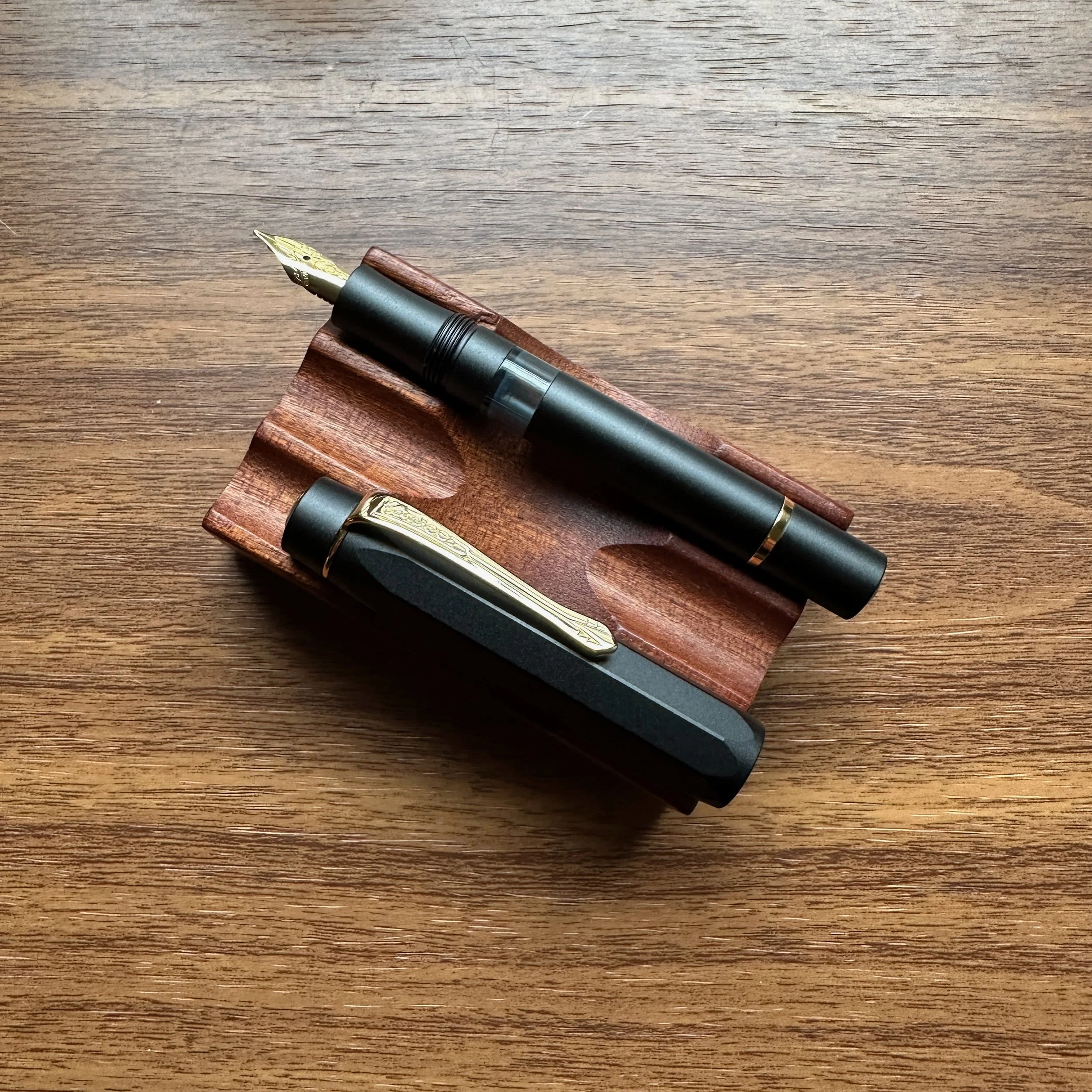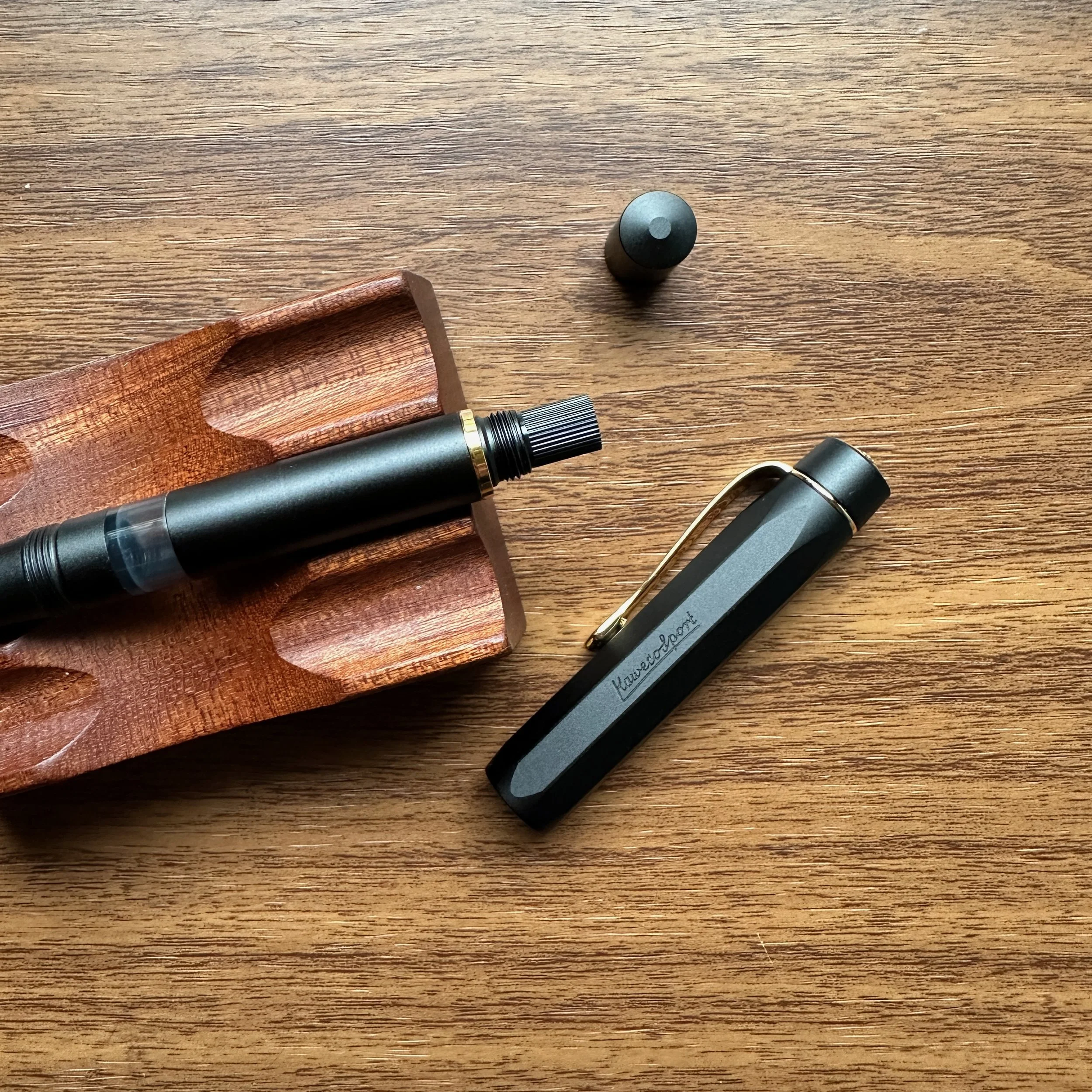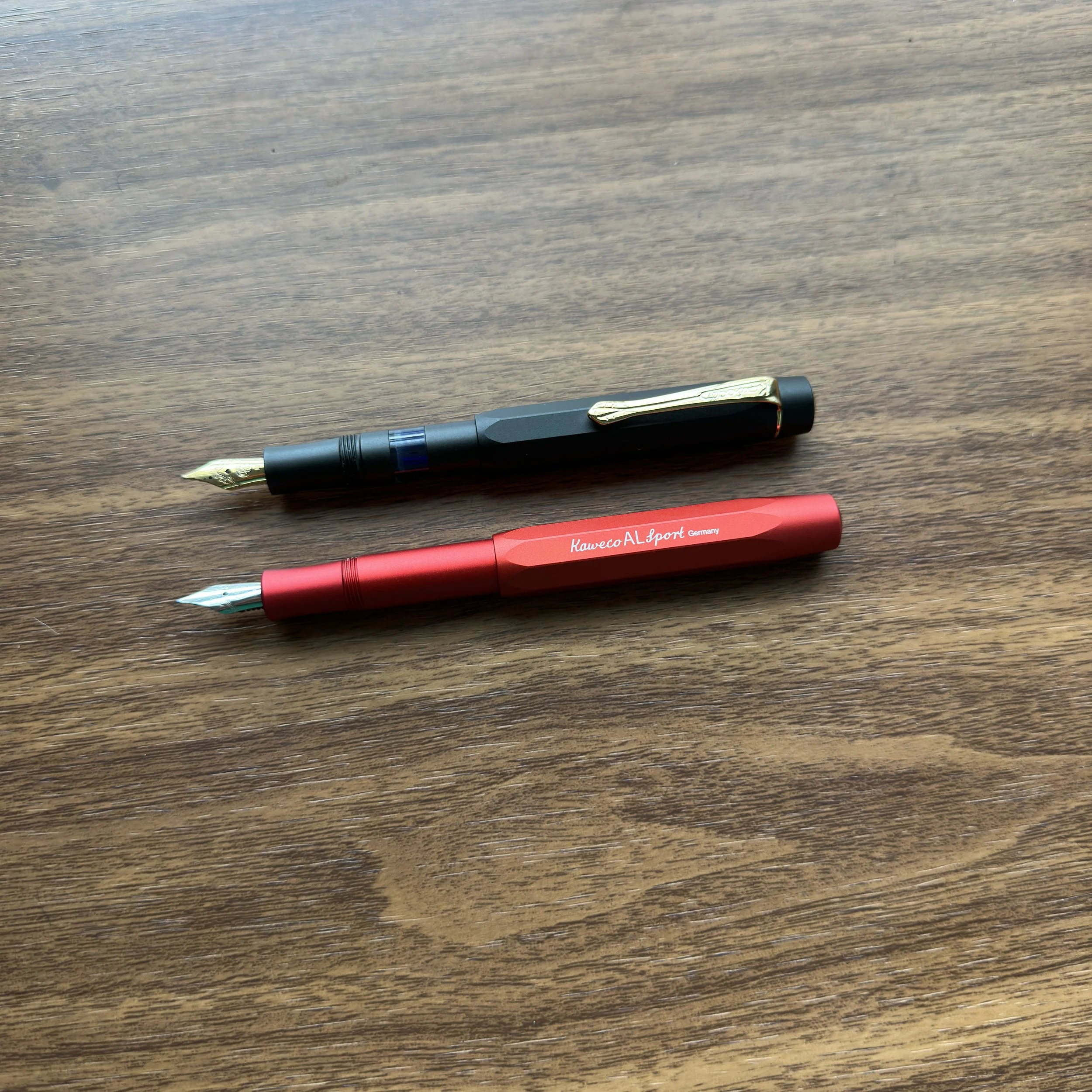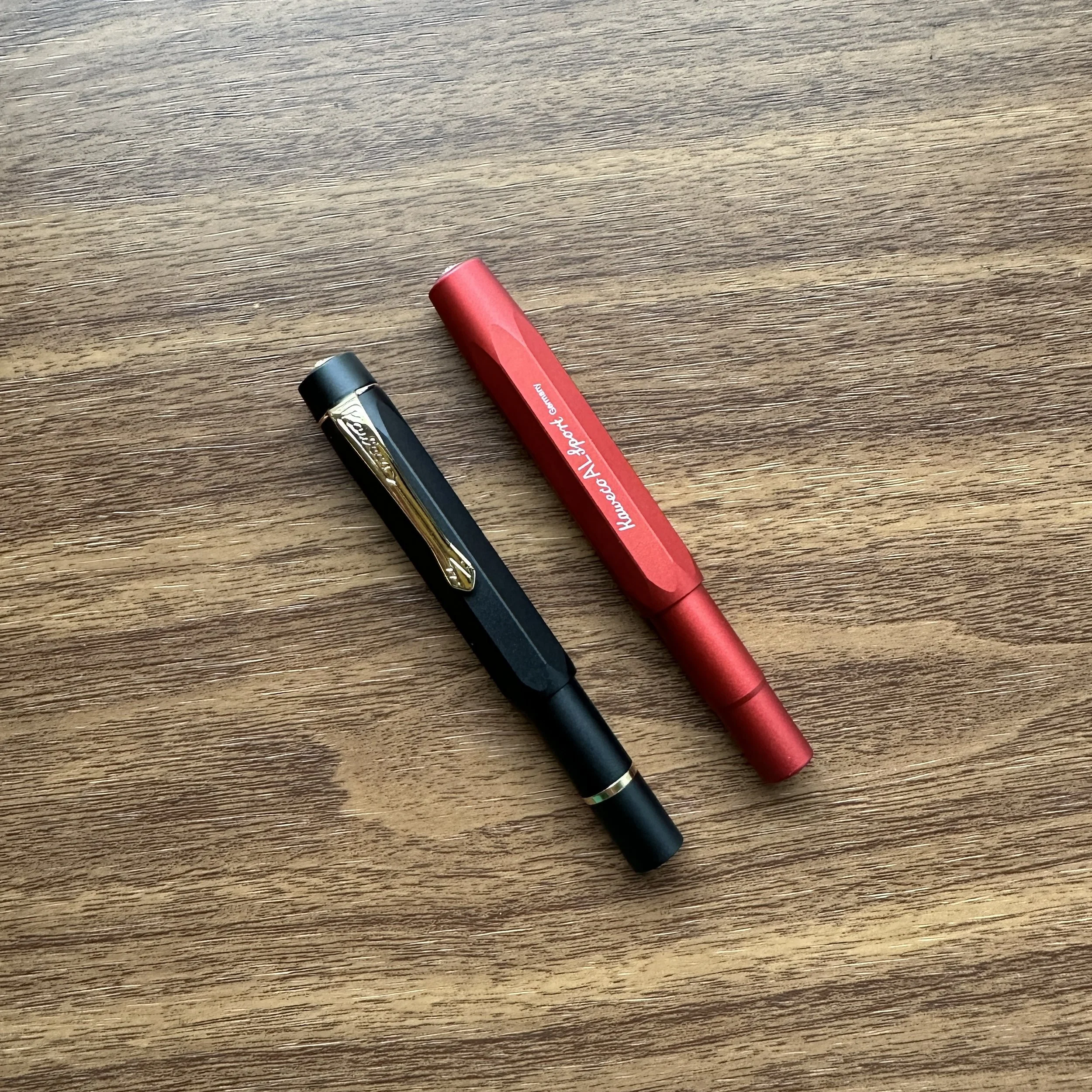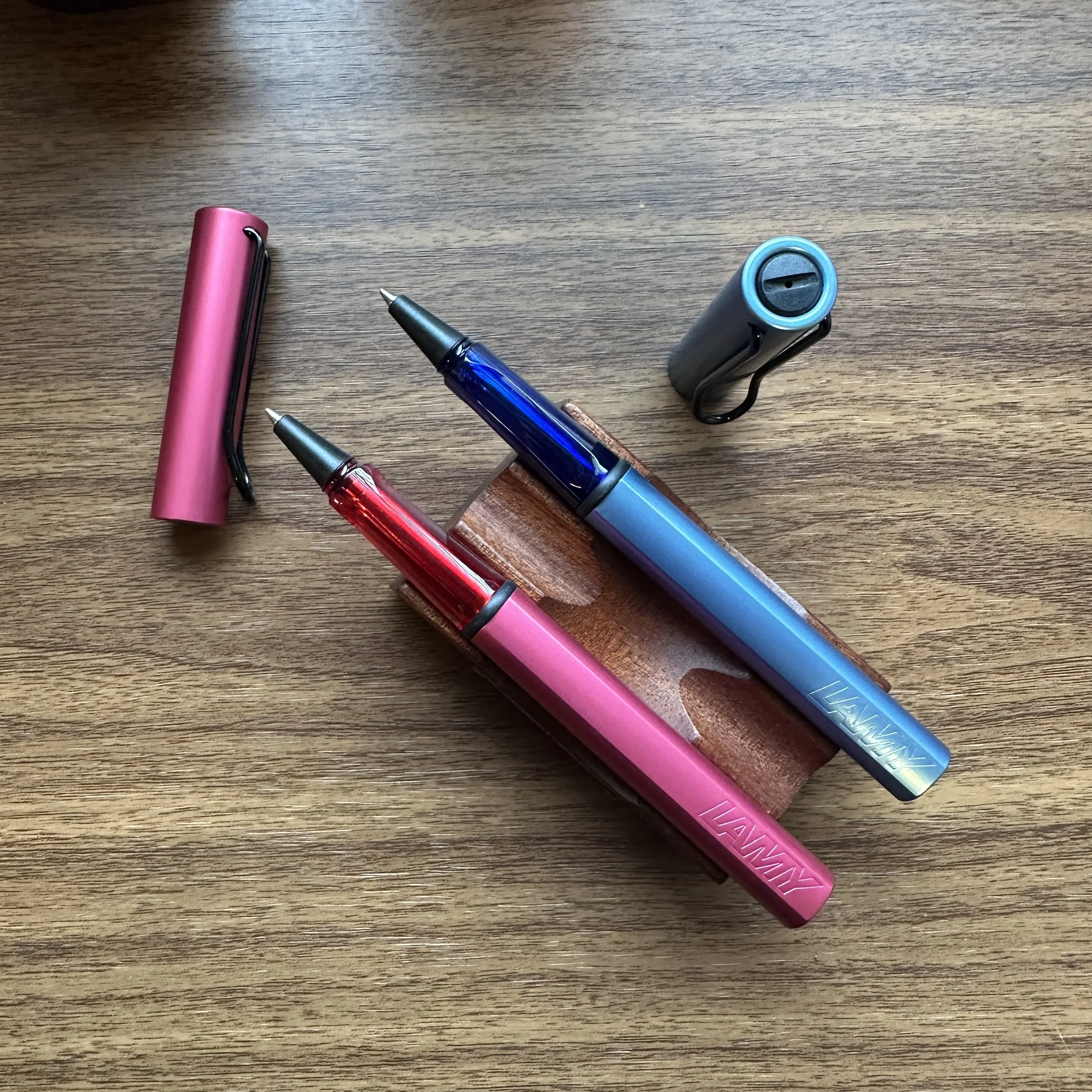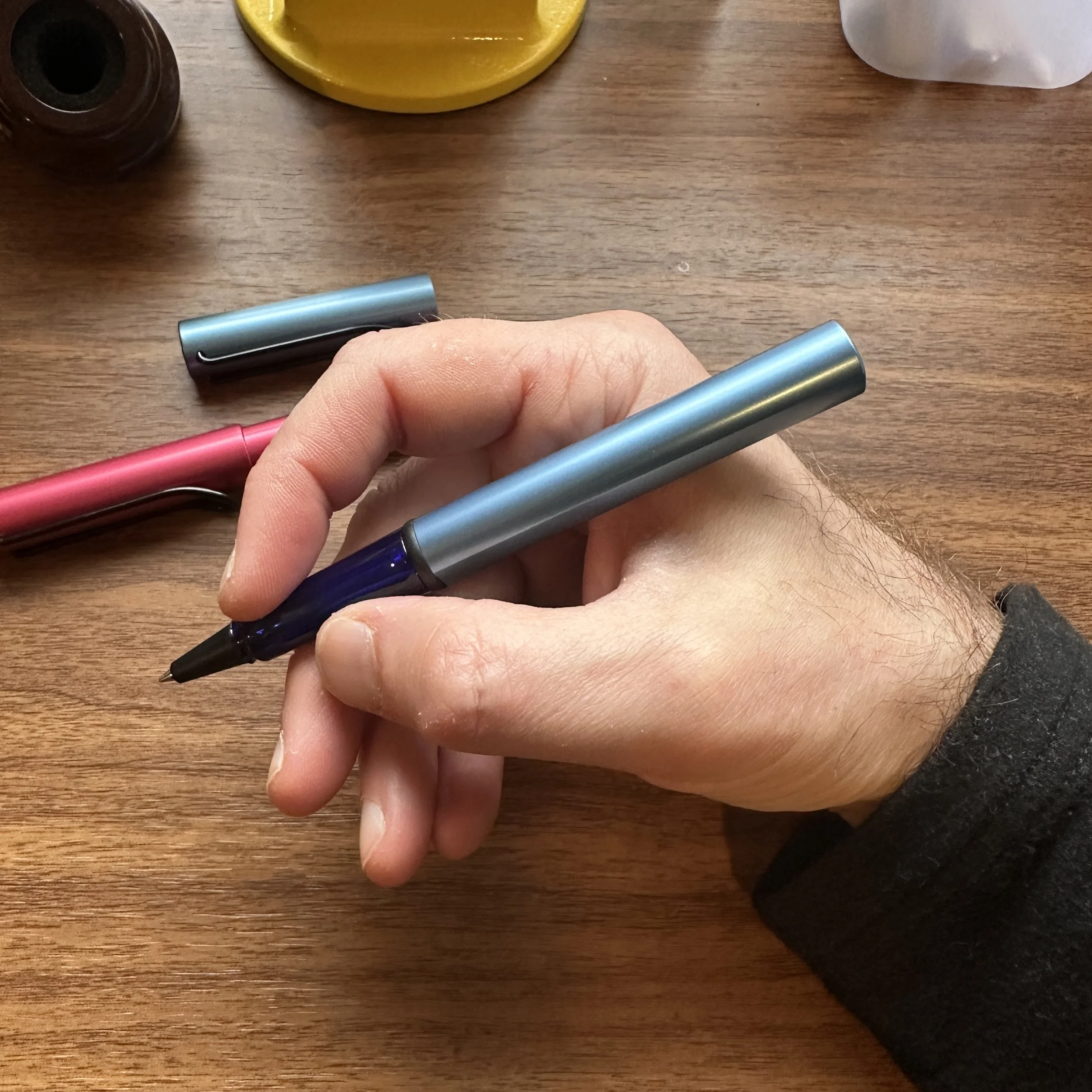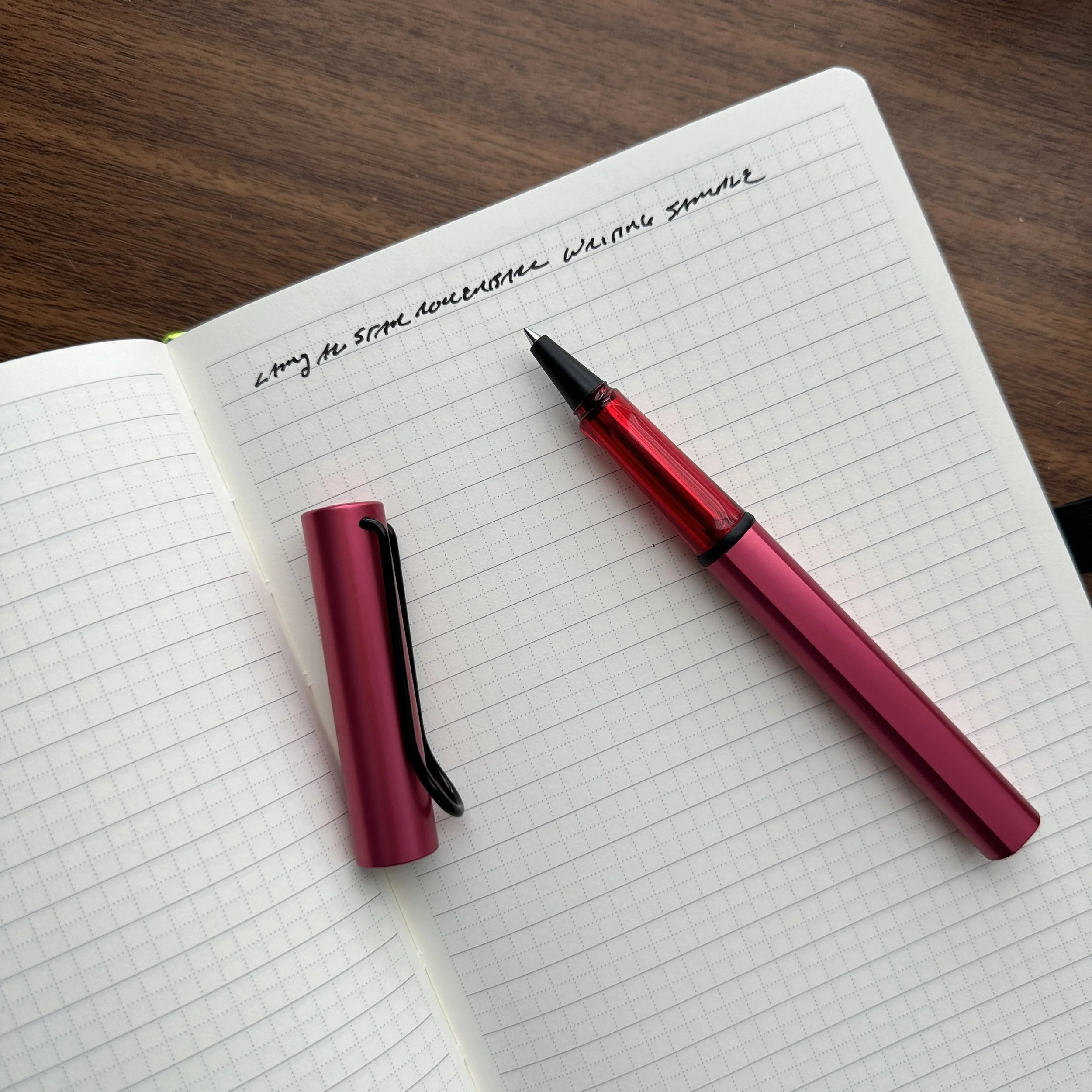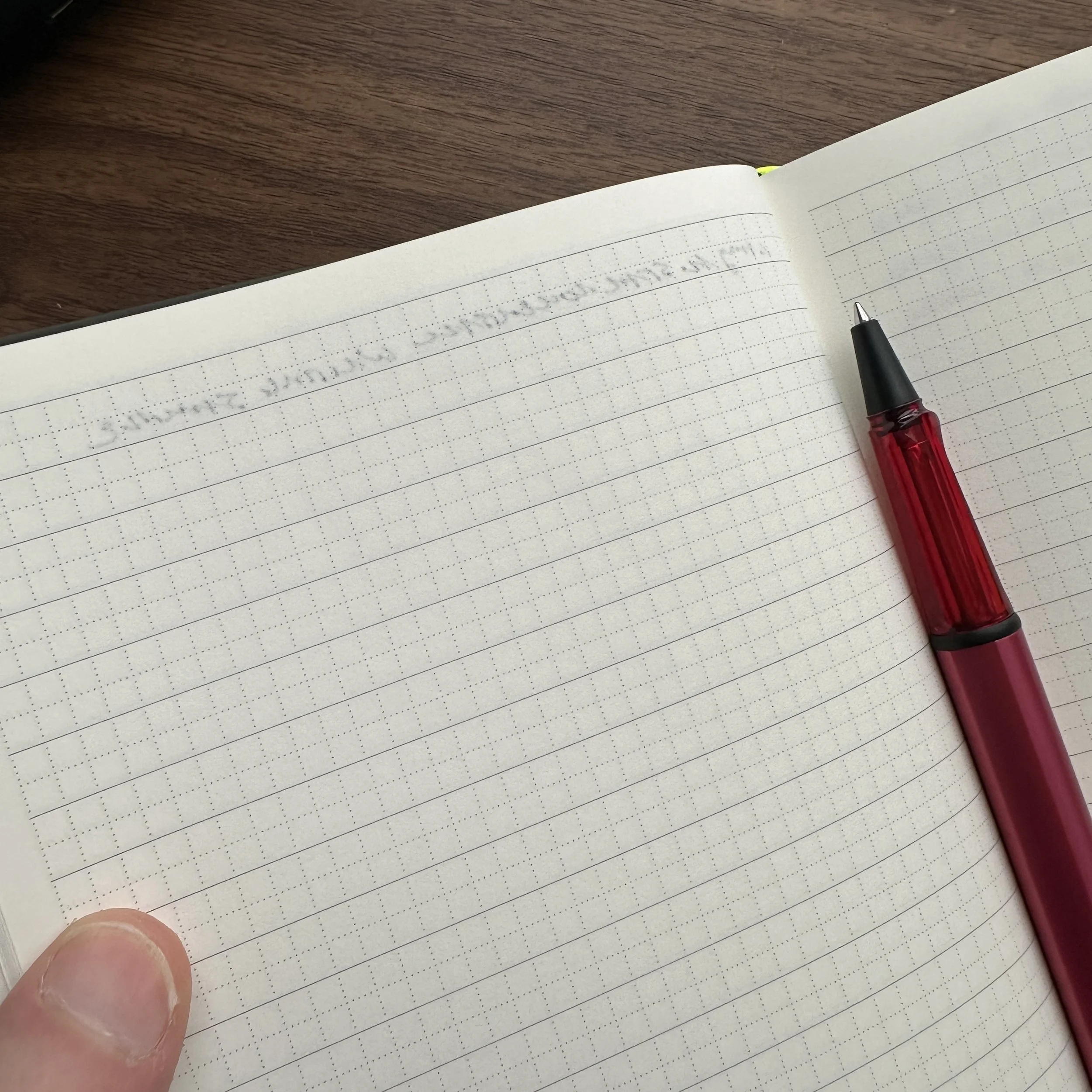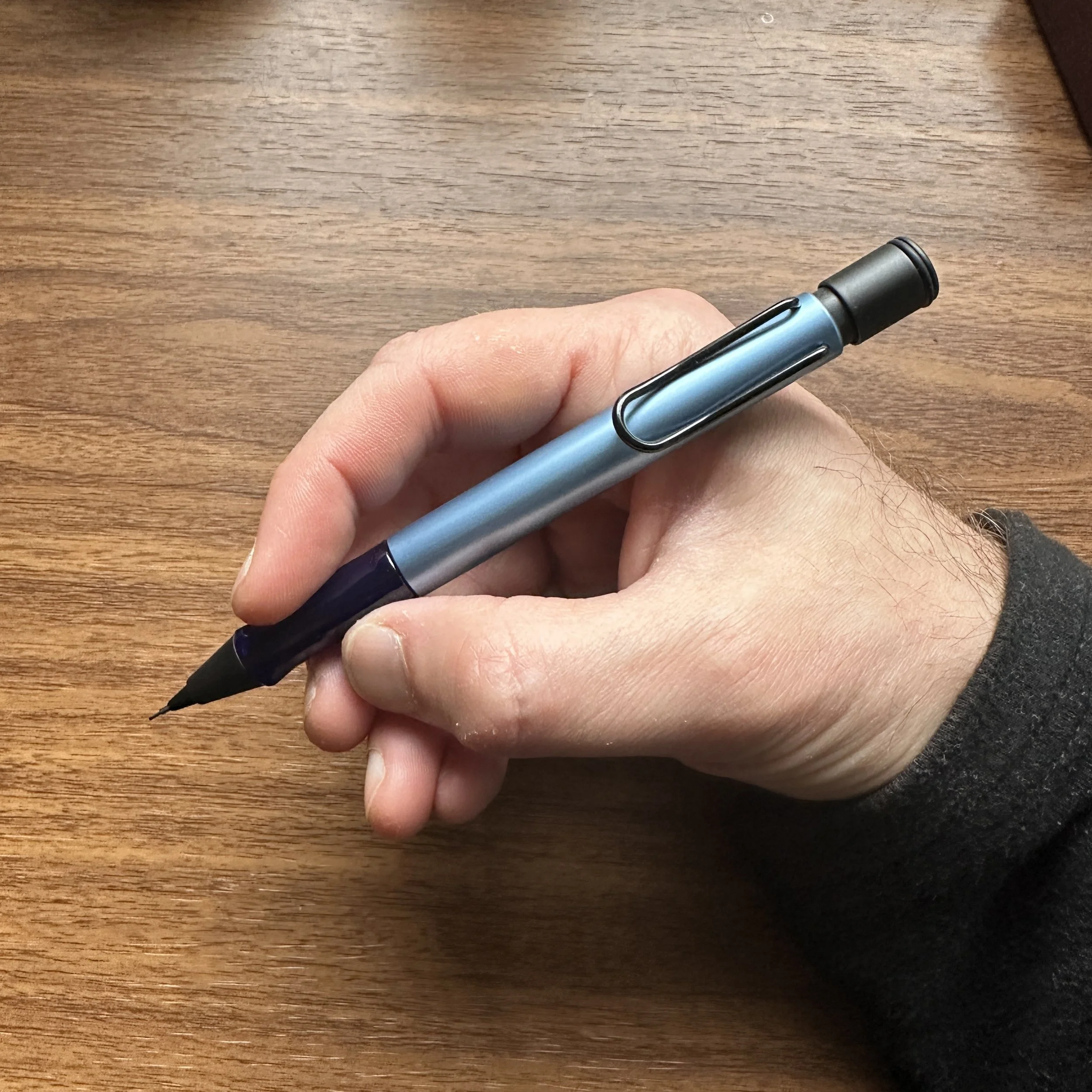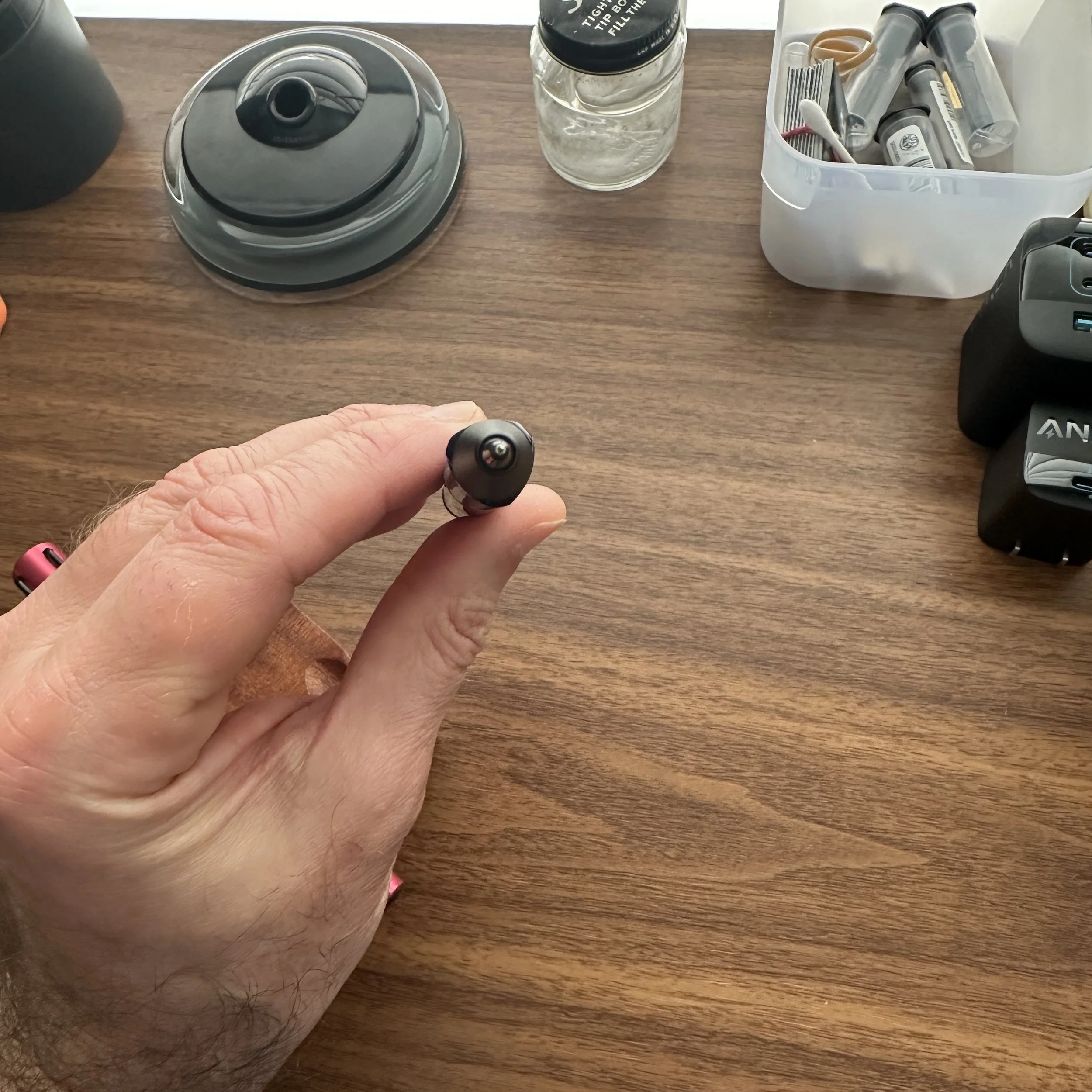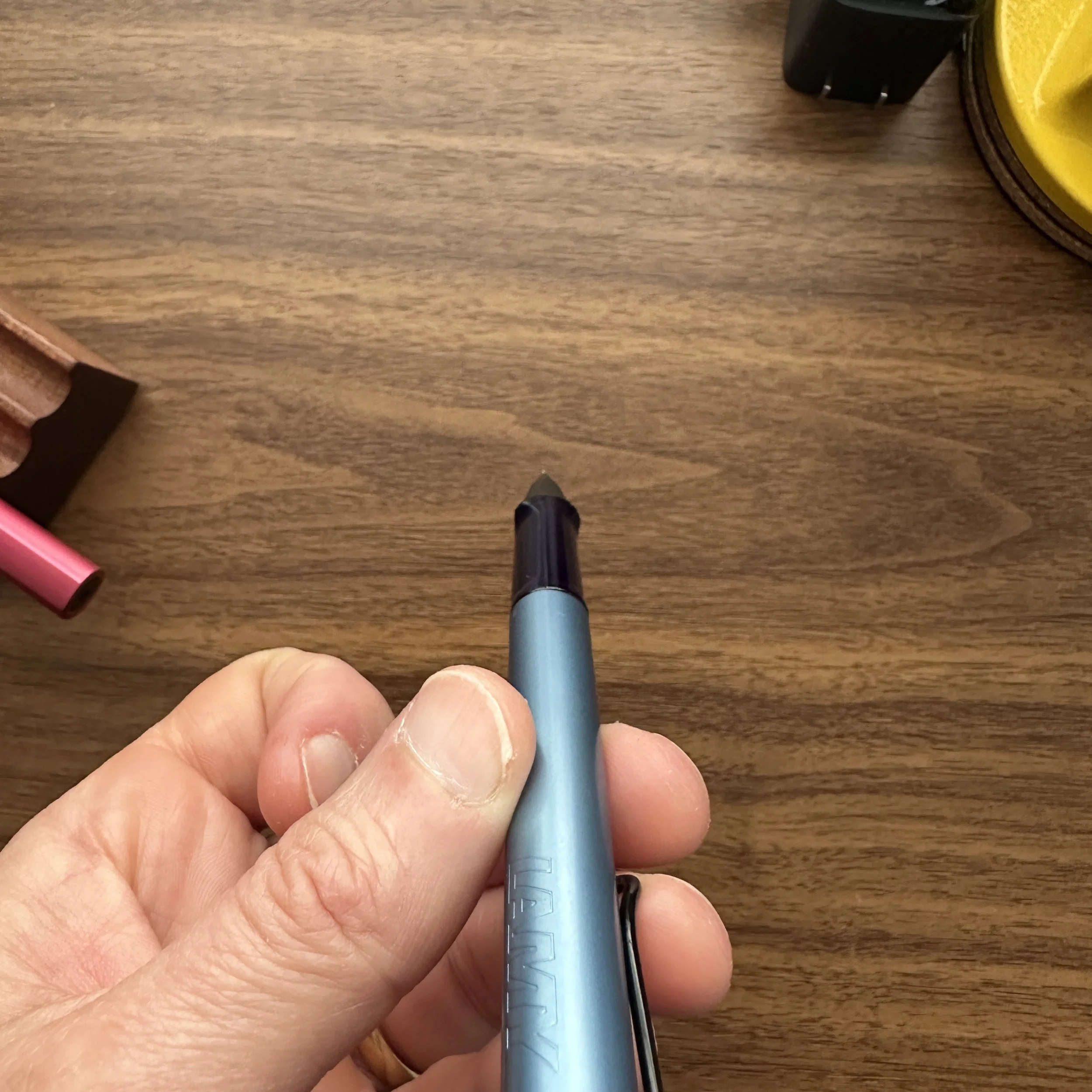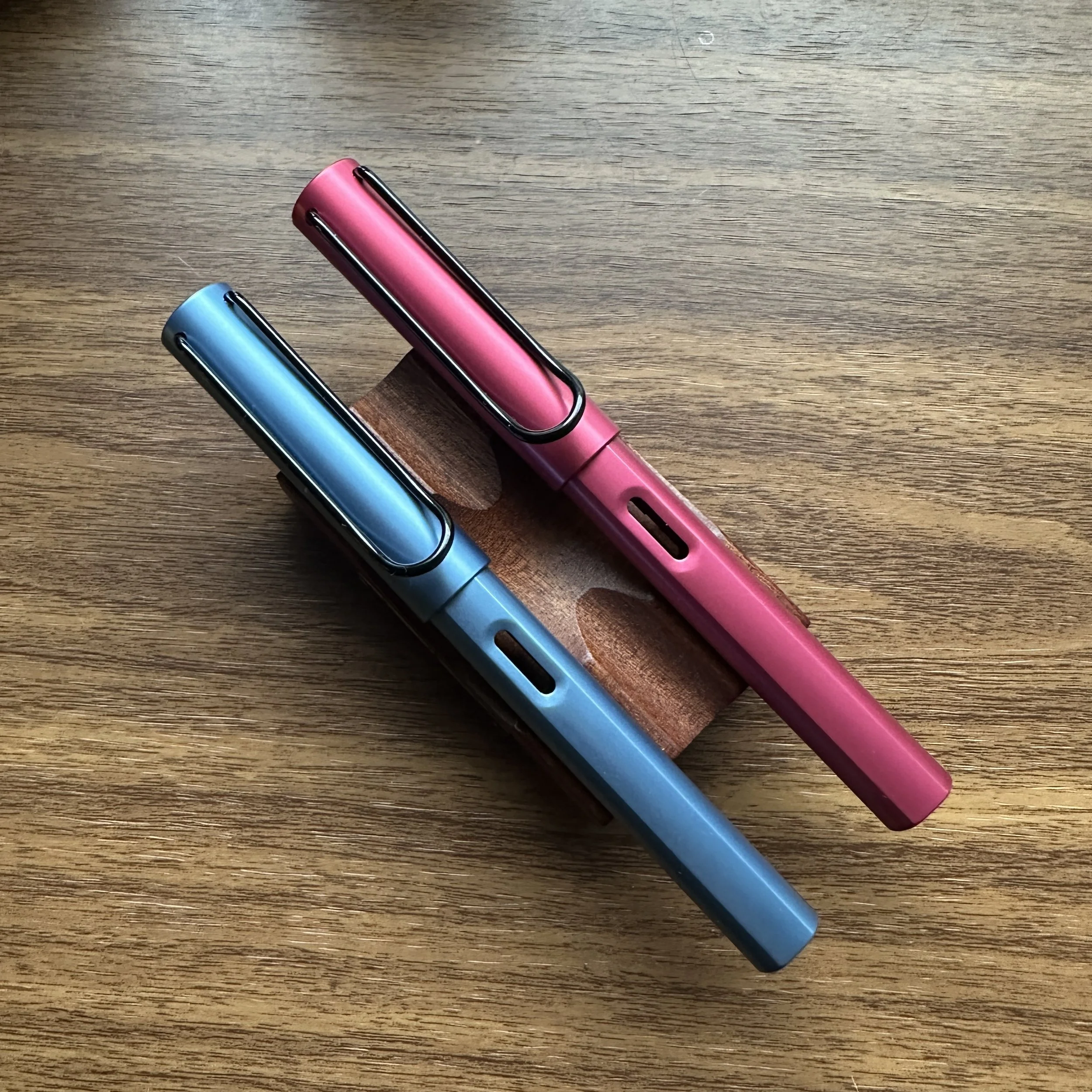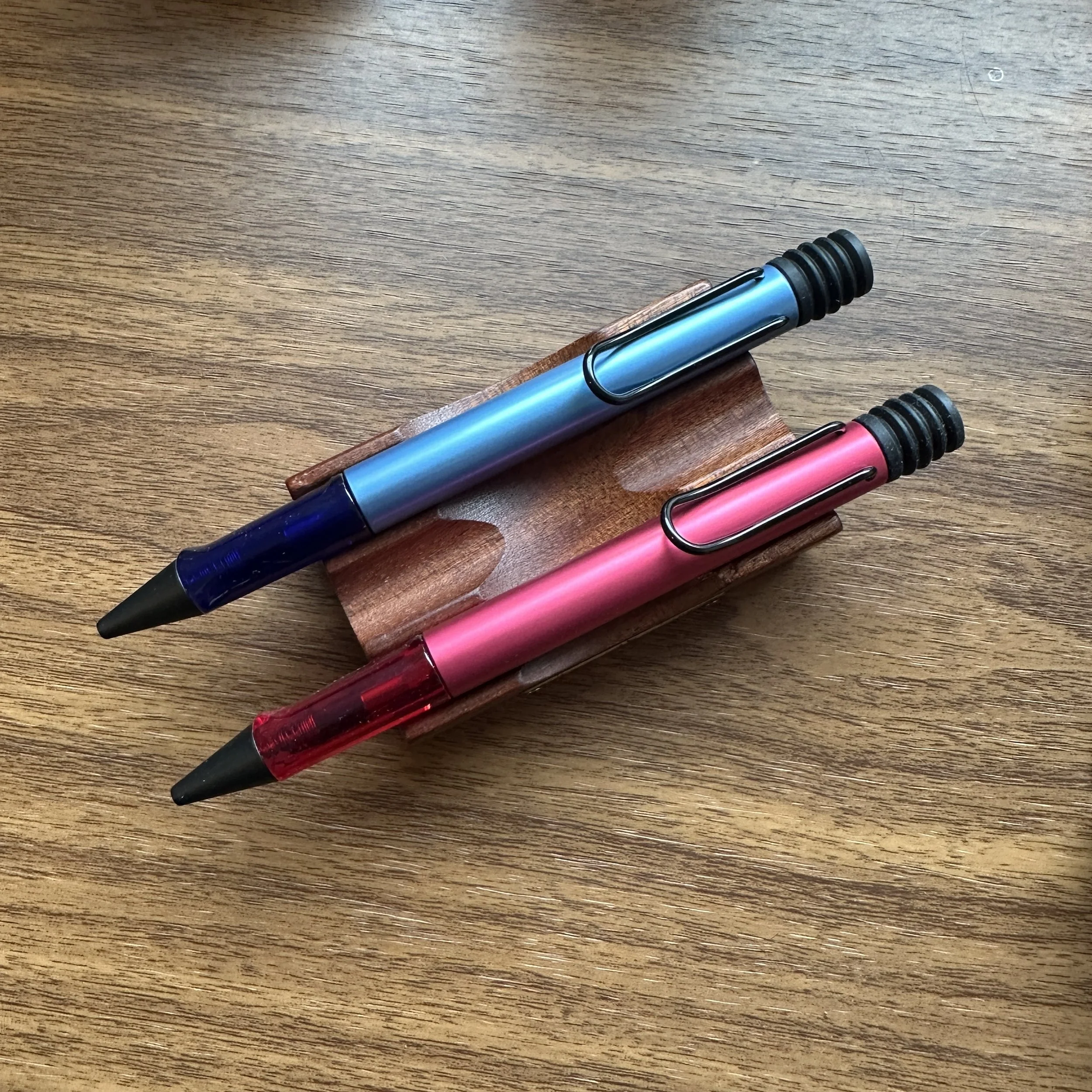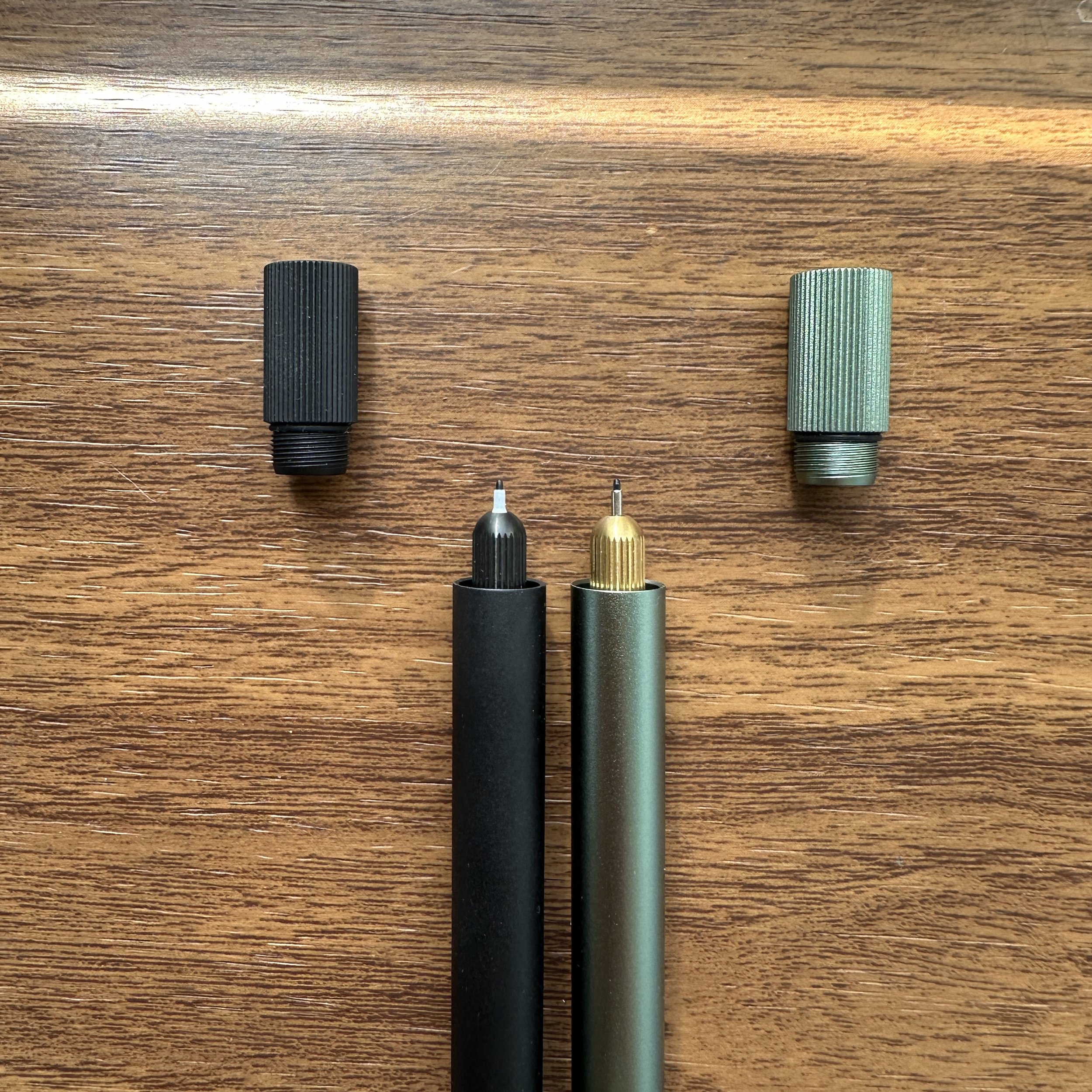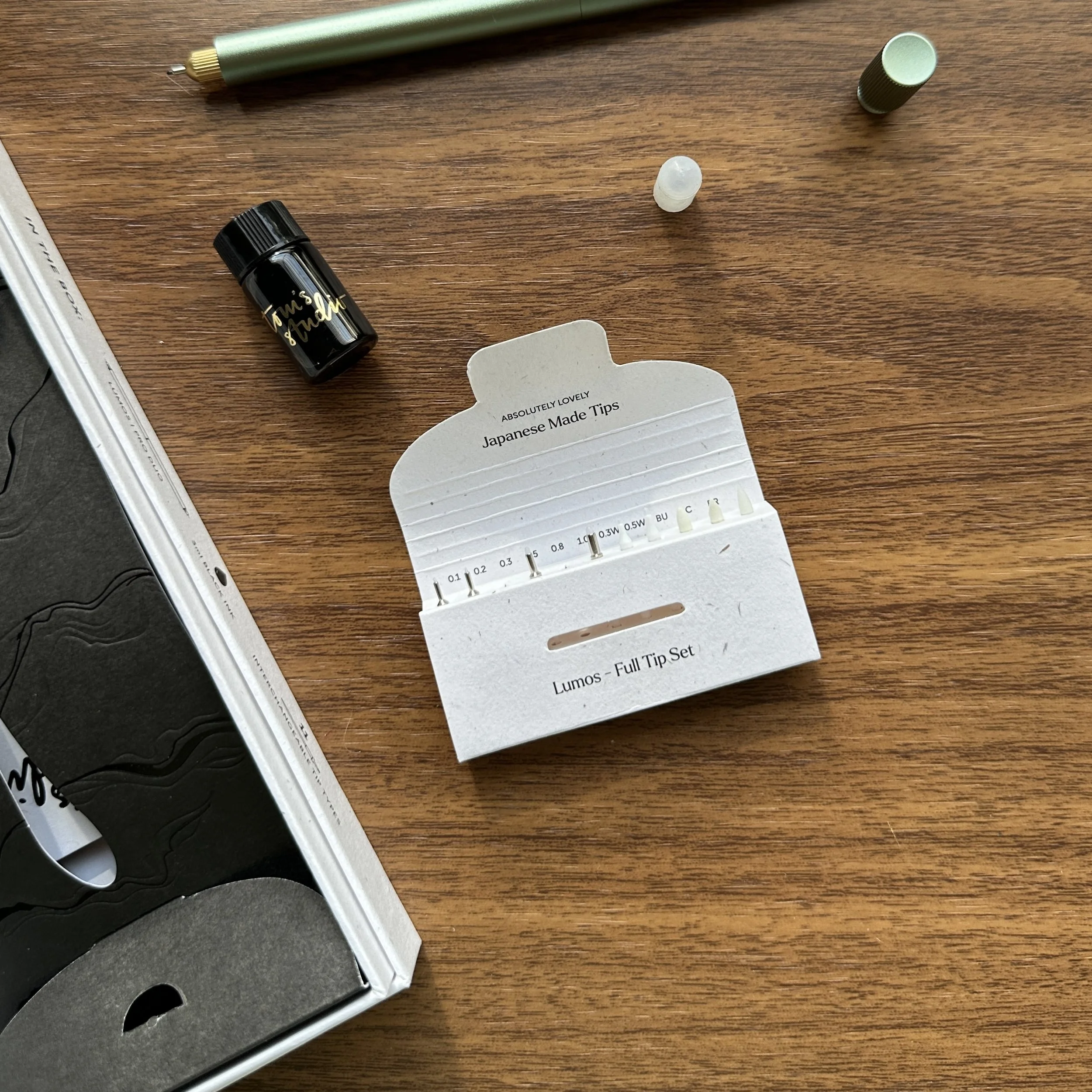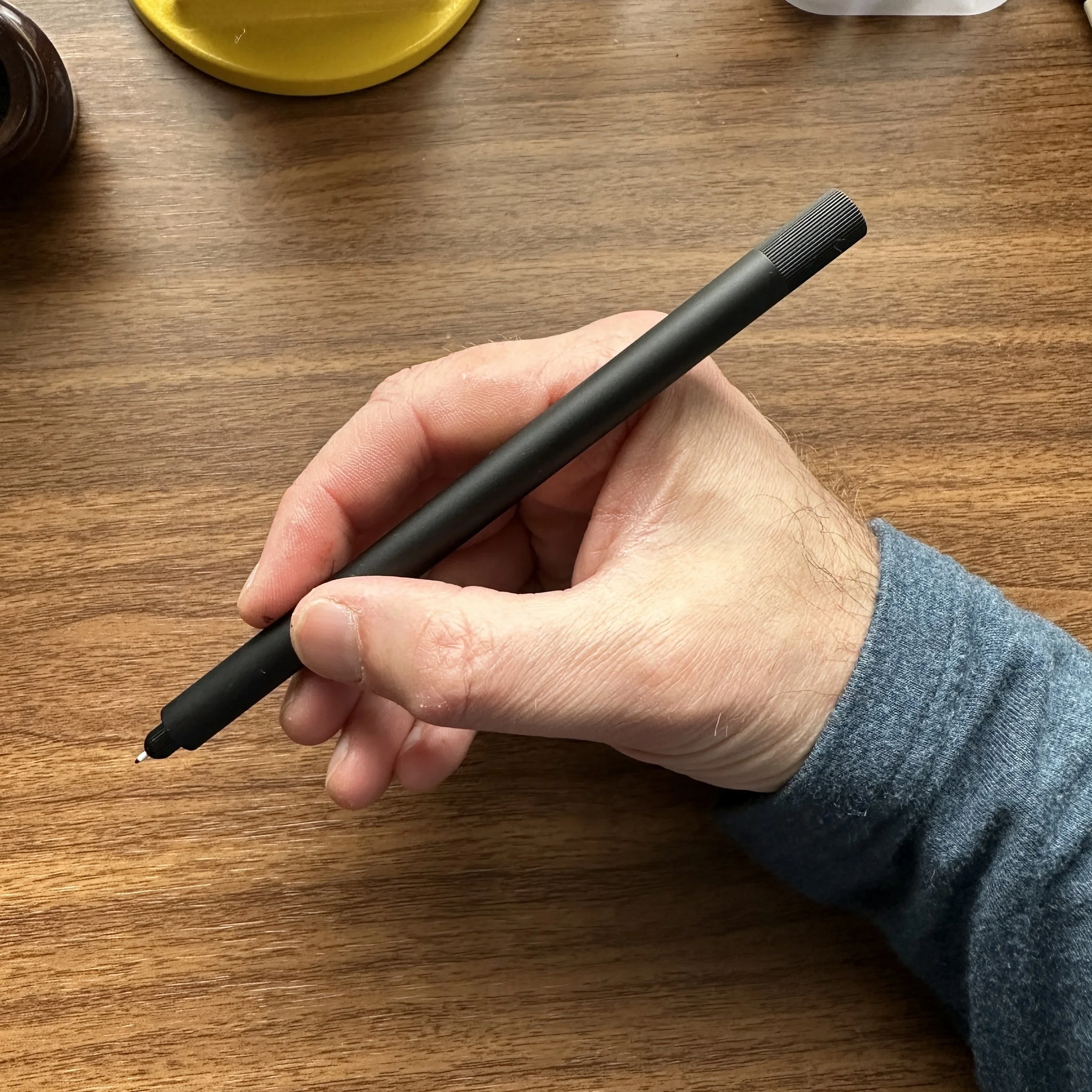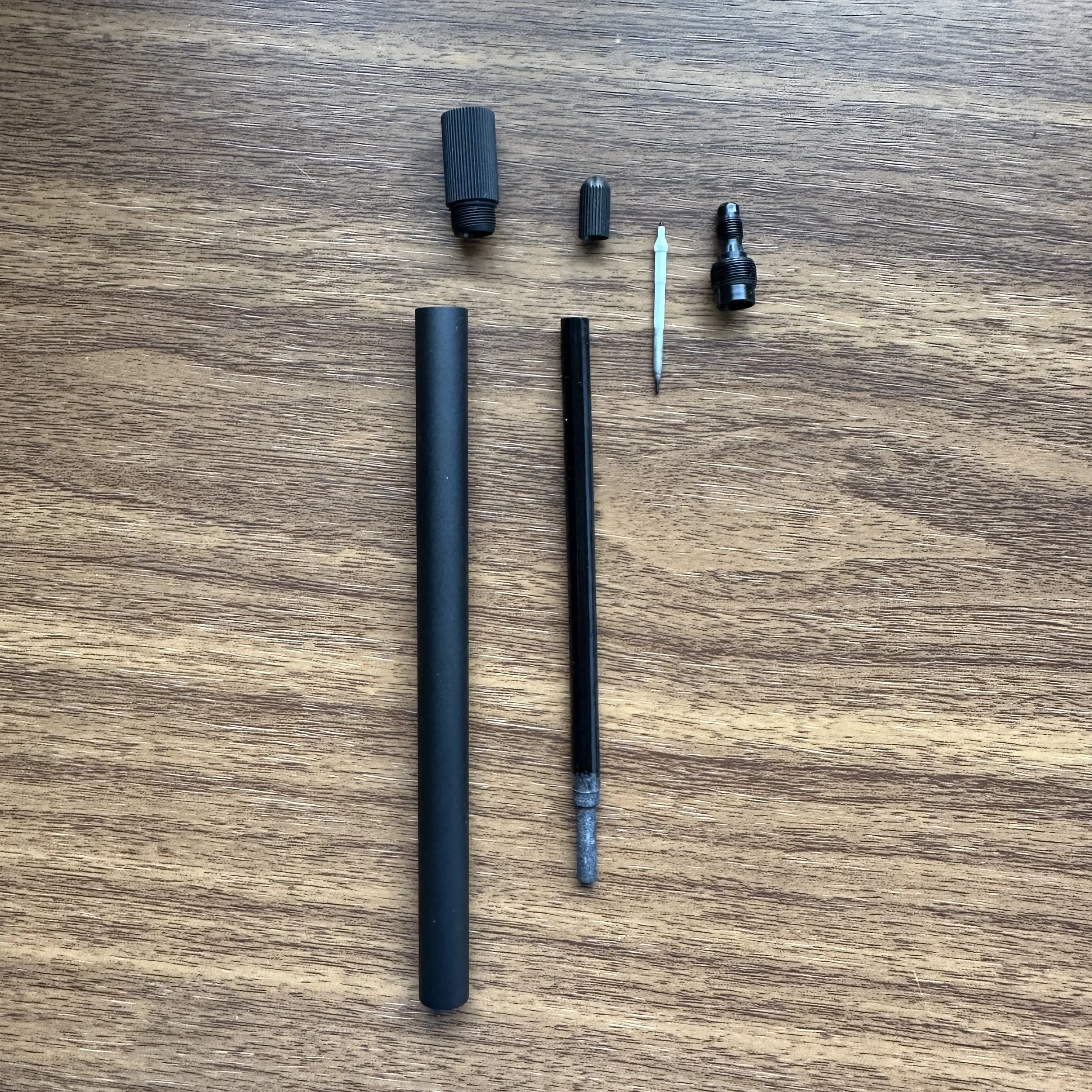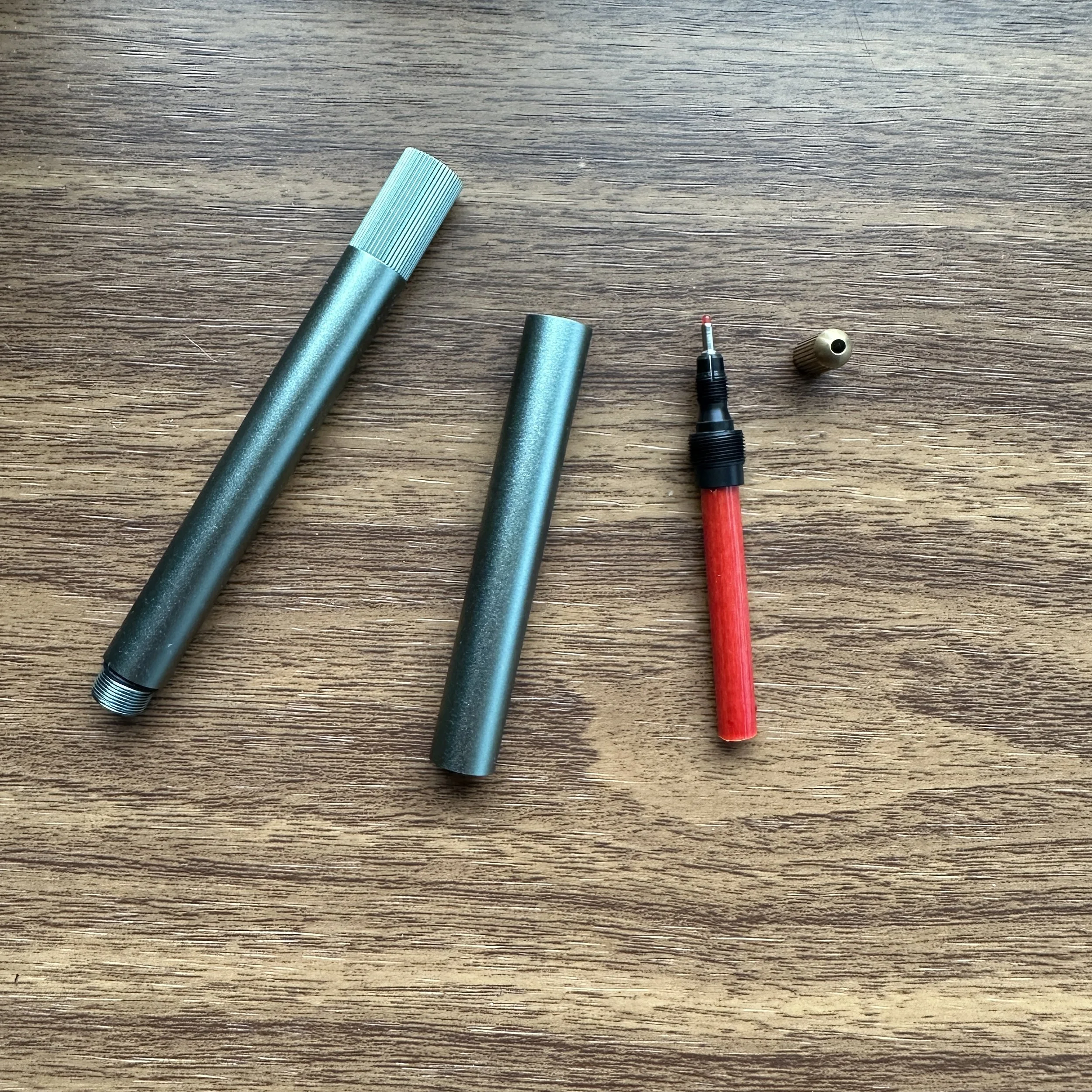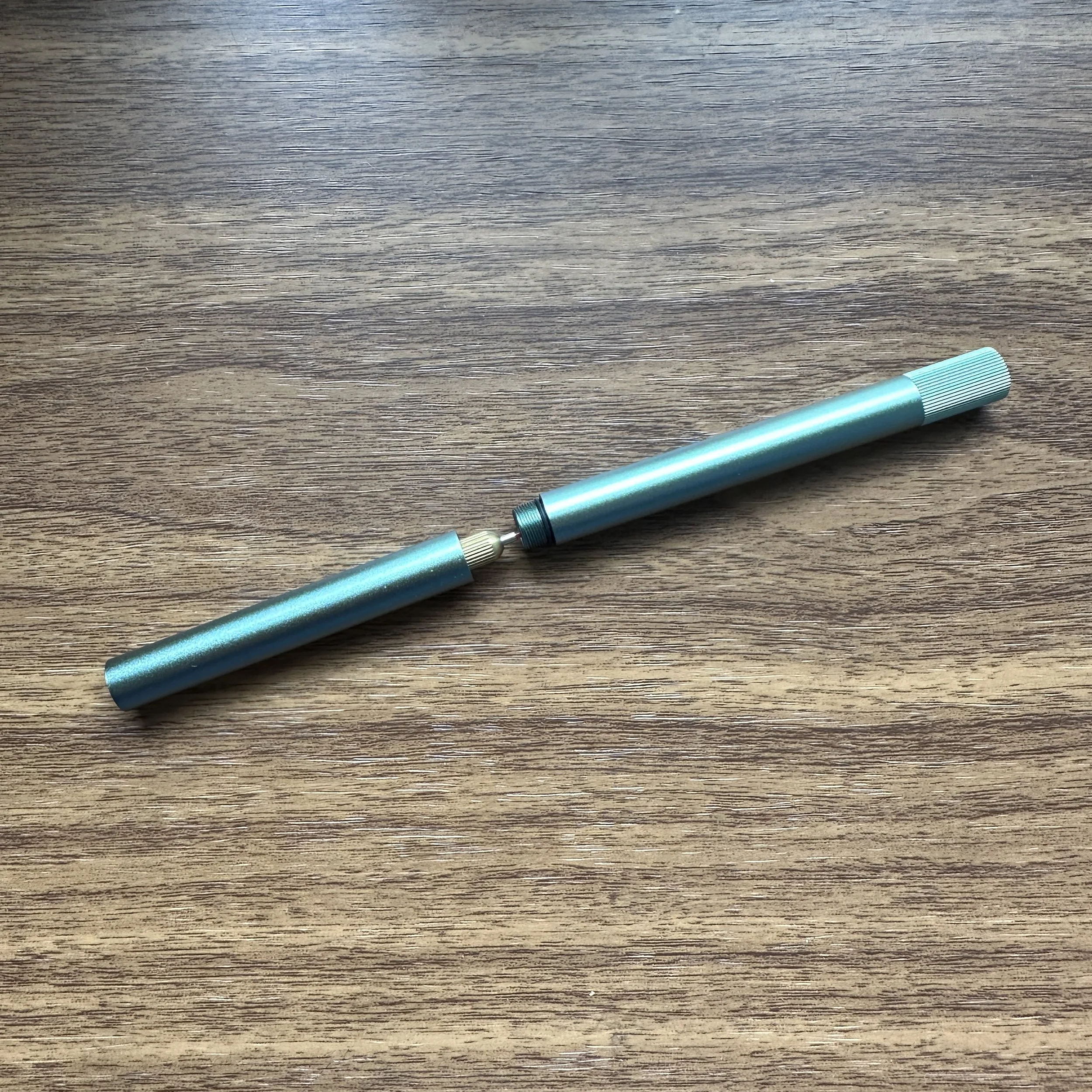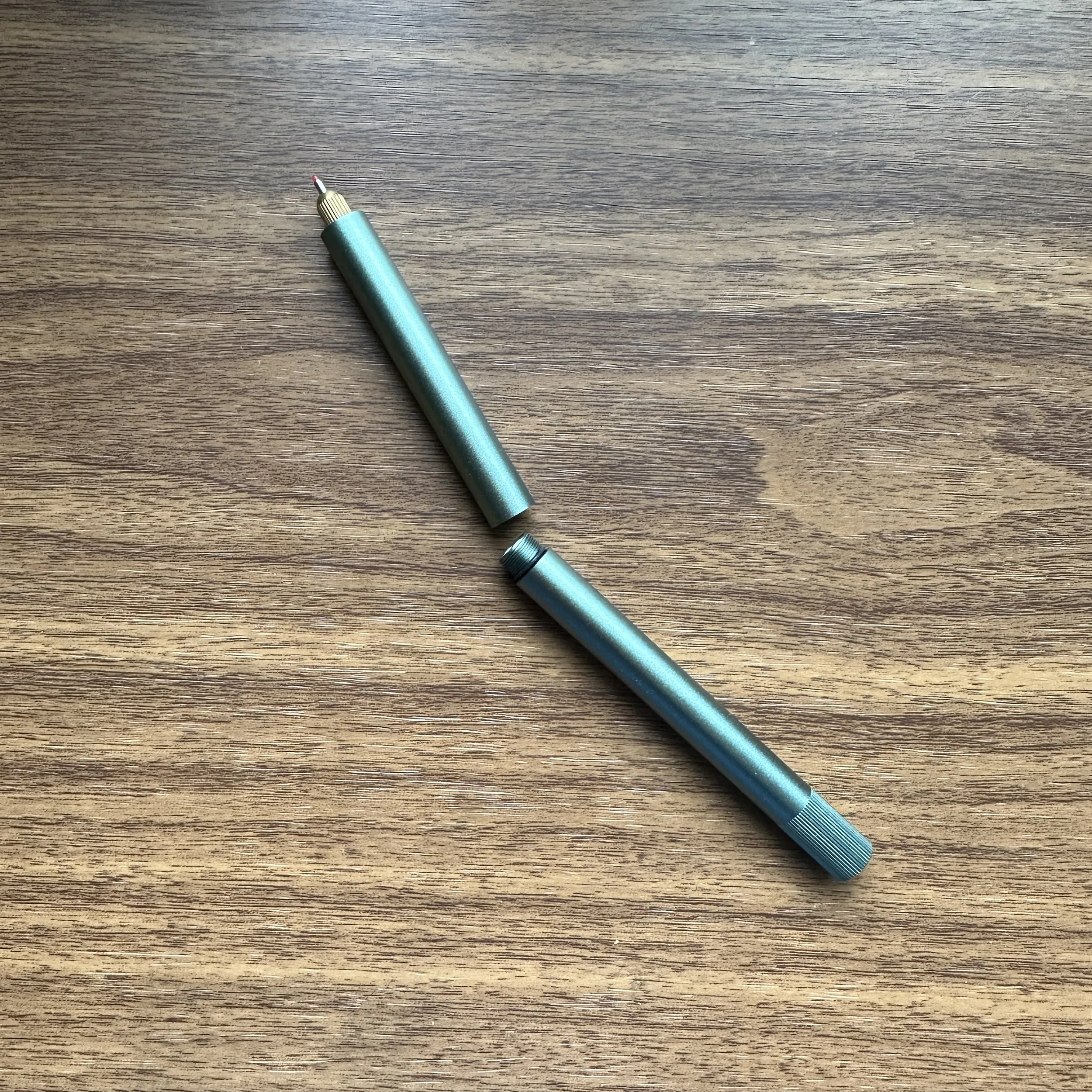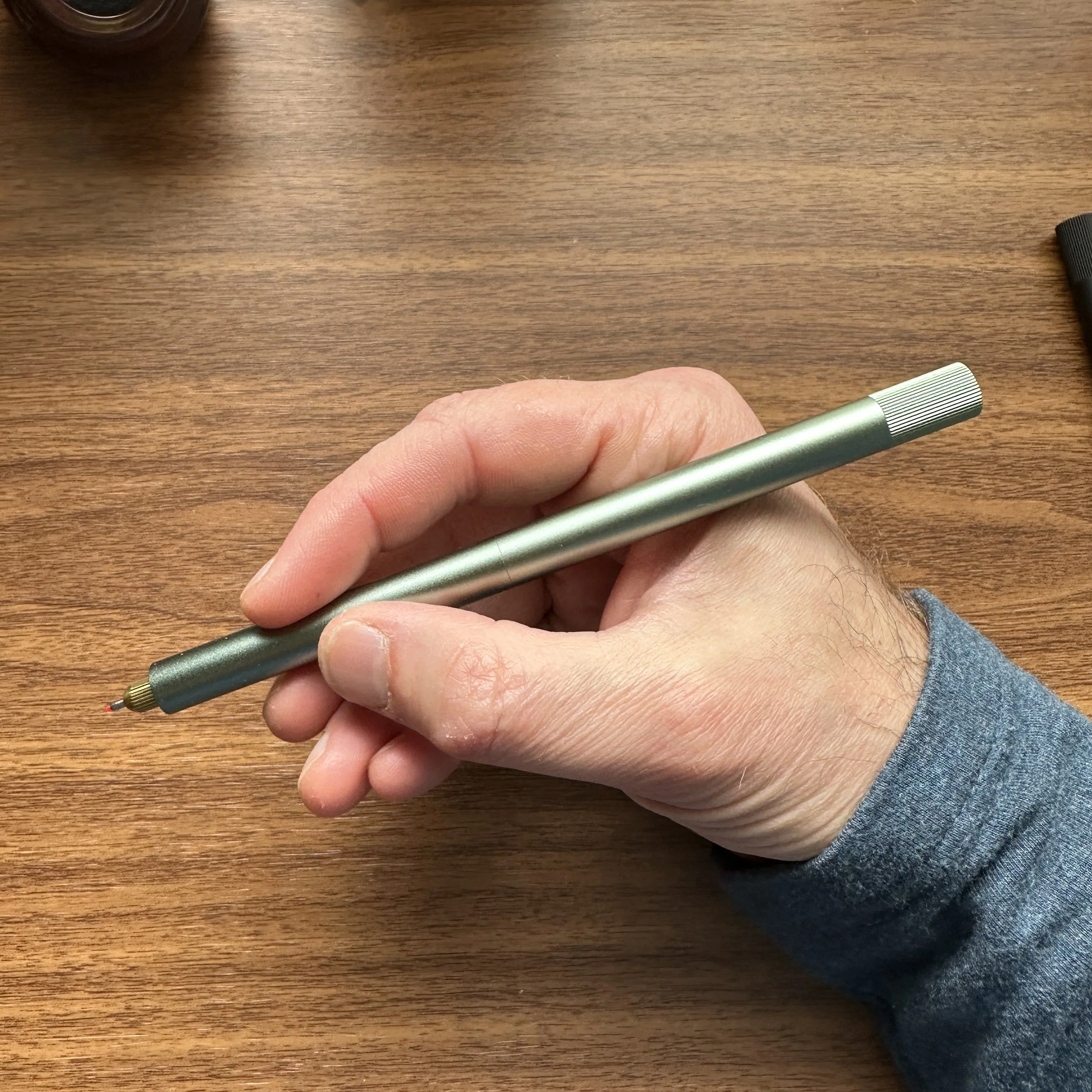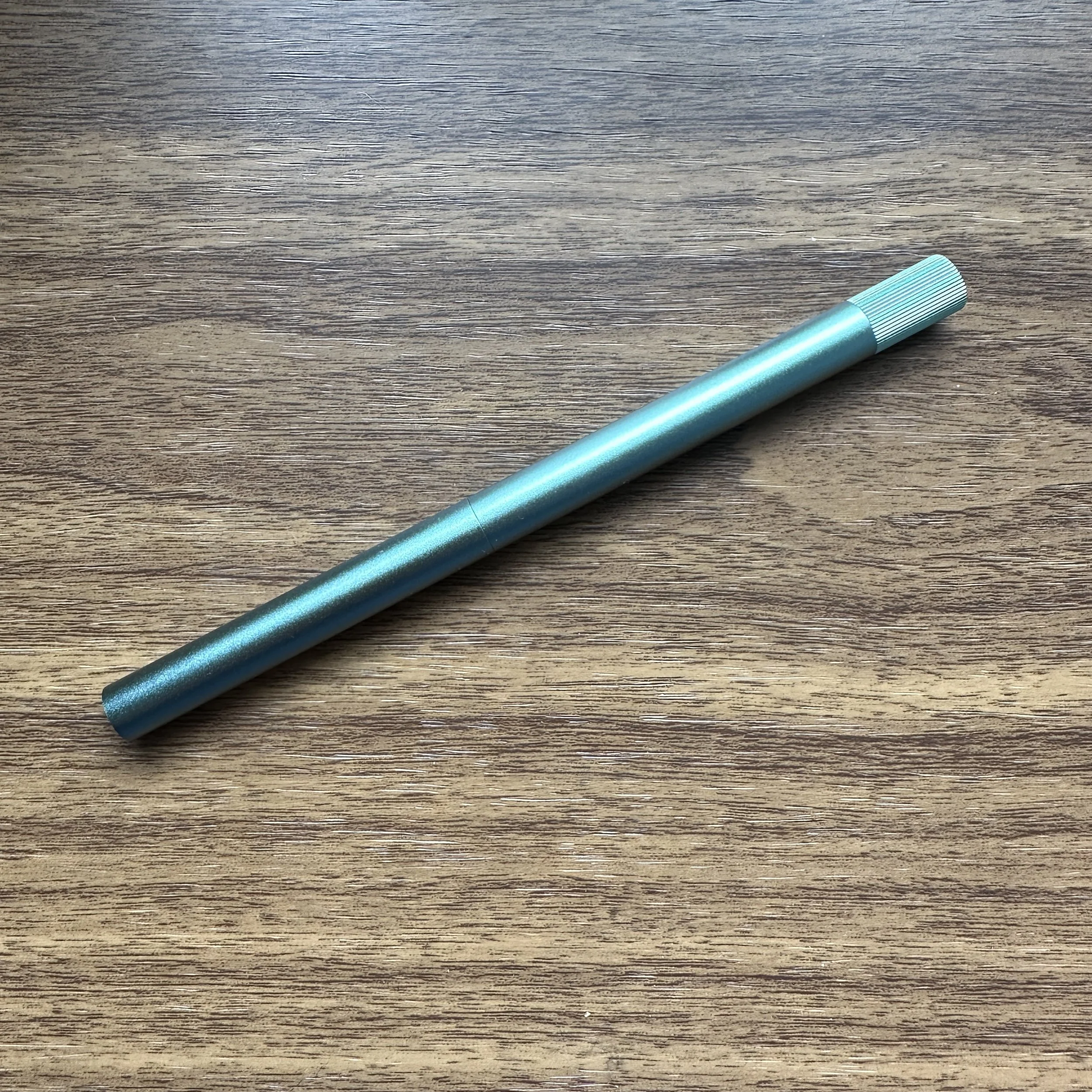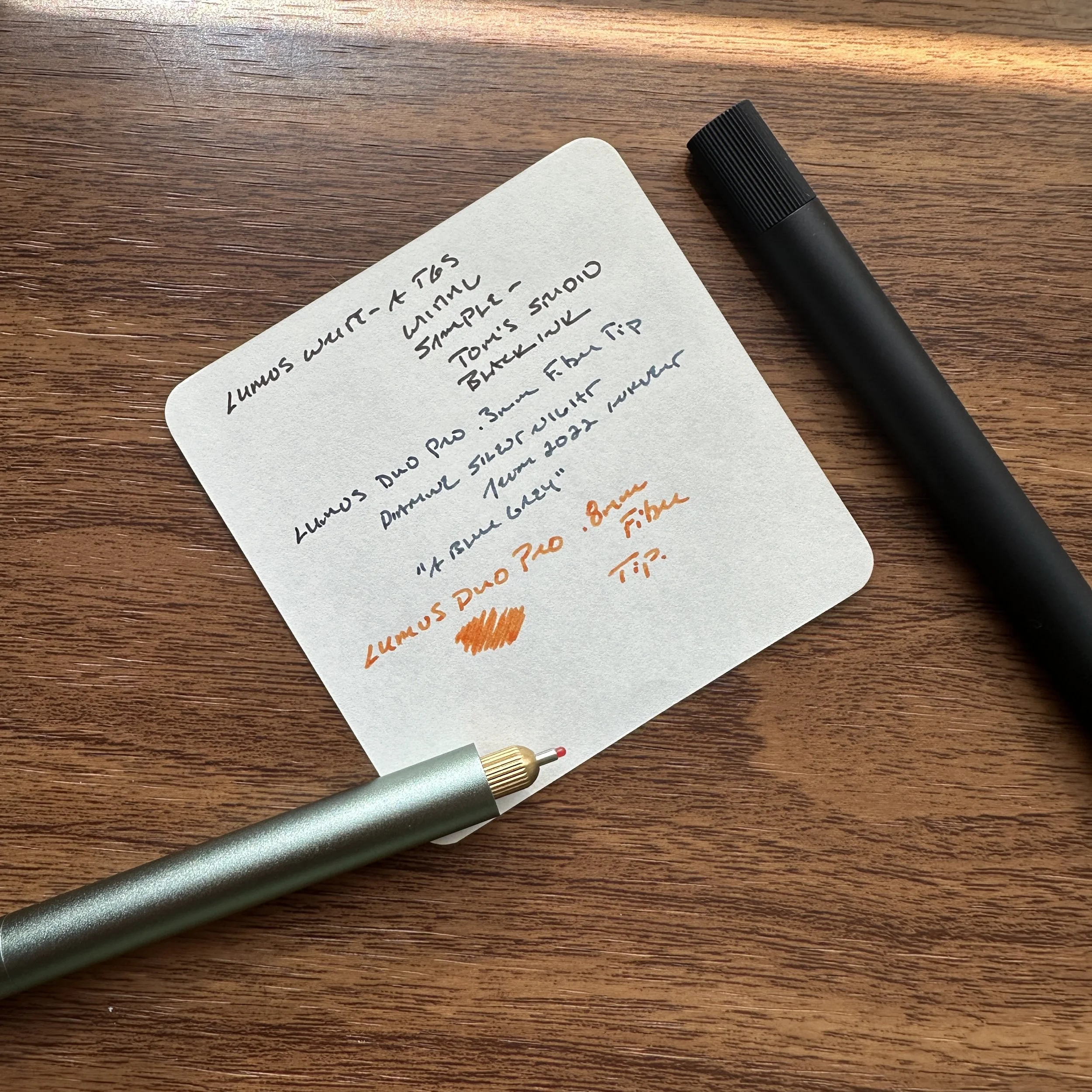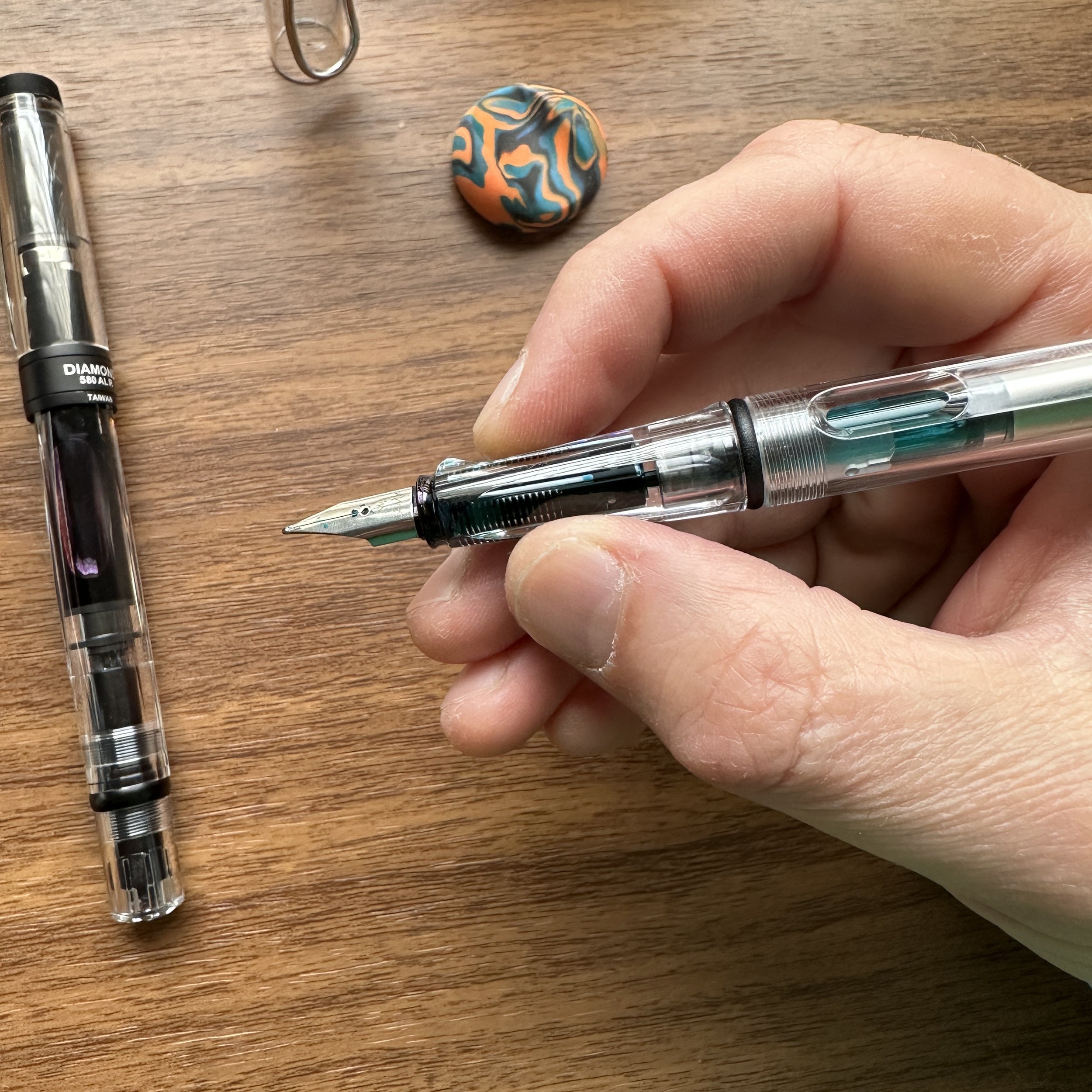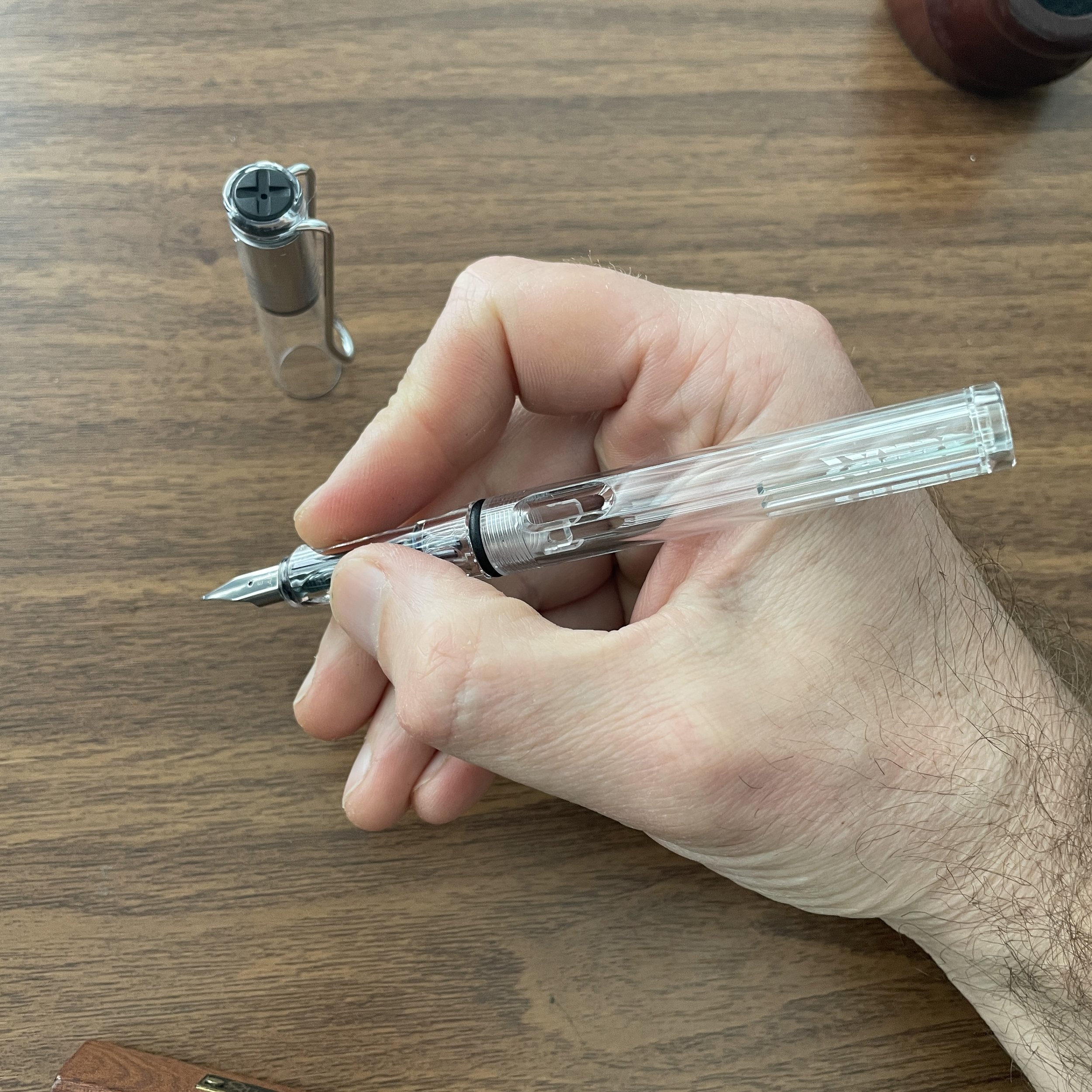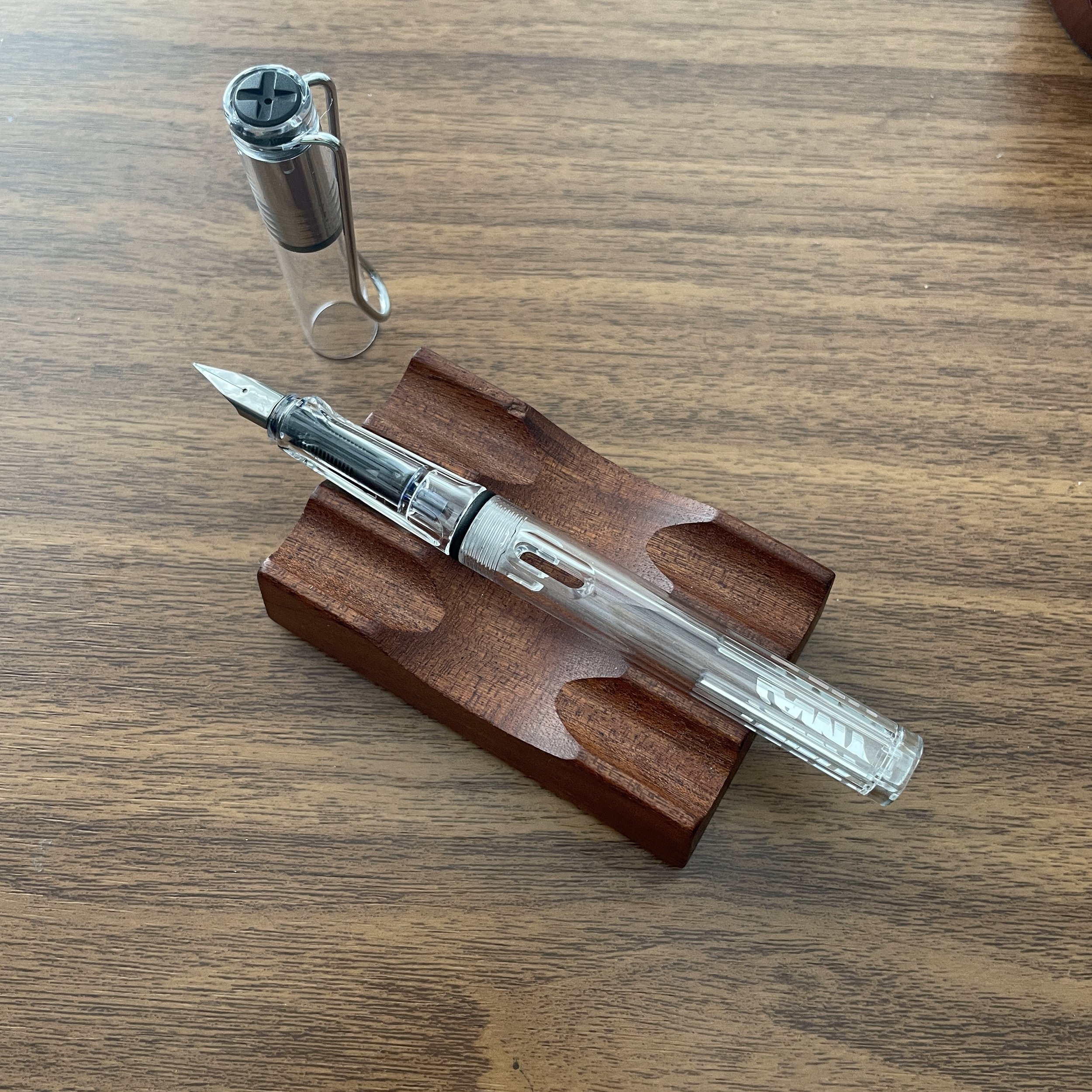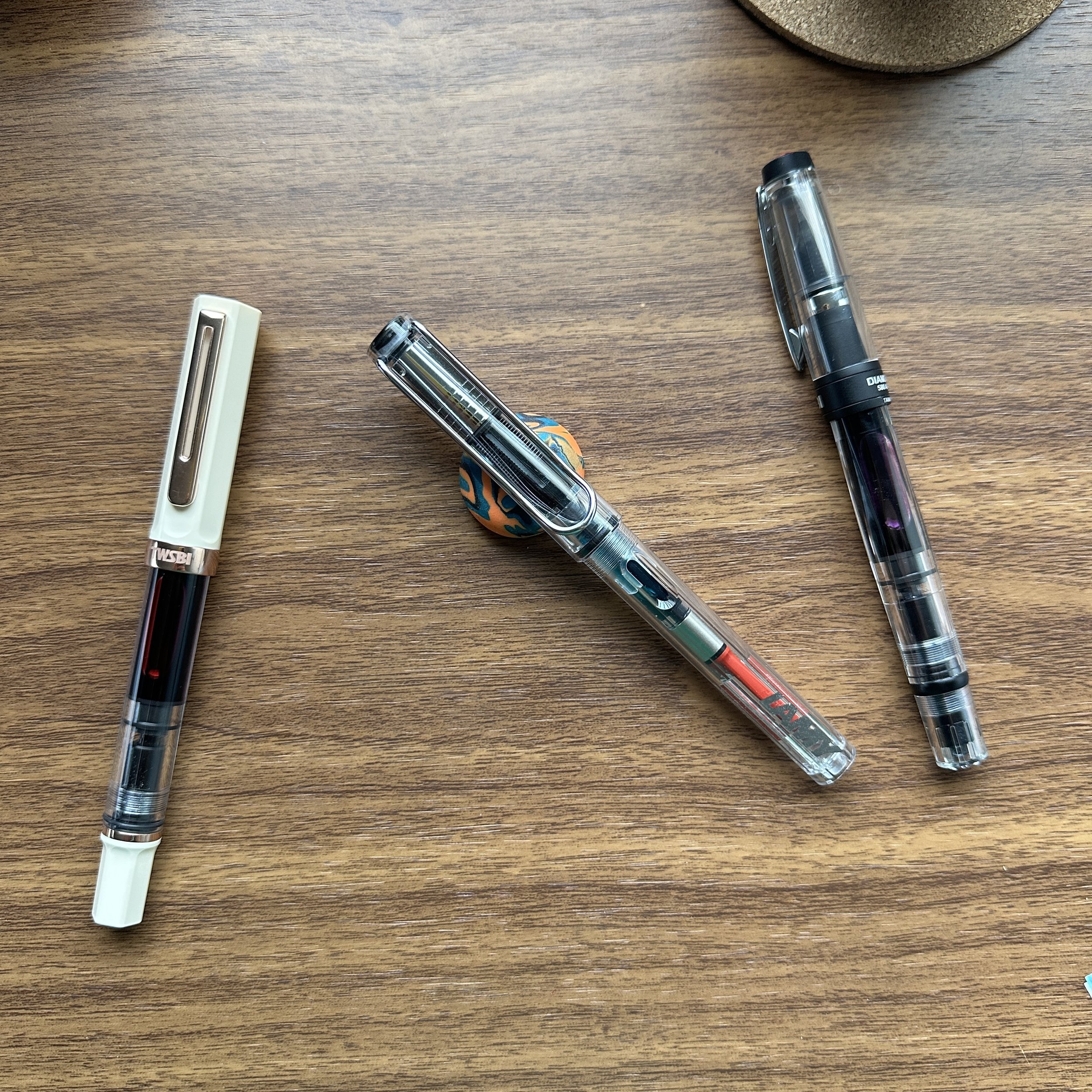So why did I choose to review this relatively new, niche product during the T.G.S. 10th Anniversary month? Because it provides a great example of just how much the community has changed in the past decade-plus, both from an enthusiast and retail perspective.
In the early 2010s, when I first rediscovered fountain pens and stationery as a serious interest, the range of available products was still limited to your traditional "legacy" brands (Parker, Sheaffer, Waterman, Montblanc, Aurora, Omas, etc.). Sure, there were a lot of great pens available - including many I wish I had purchased at original retail and currently covet a great deal - but the market lacked many of the offbeat, original designs from smaller makers at a lower price point. There certainly weren't many "pocket" fountain pens available, as that product category didn't take off until Kaweco expanded the Sport lineup and began introducing other popular designs such as the Liliput.
Today, smaller brands from independent makers and/or designers proliferate, such as Tom's Studio, which started out as a very small calligraphy-focused maker but which has gradually expanded into fountain pens, refillable fineliners, fountain pen inks, and even a recently released mechanical pencil. I reviewed the "Lumos" fineliner pens a week or so back, and in the meantime have been looking at two different fountain pens: the "Studio" and "Studio Pocket".
The most interesting design aspect of the Studio Pocket fountain pen is that there are no threads on the cap or barrel. The cap closes using two o-rings embedded into grooves in the barrel section, and this is also how the pen posts. (While o-rings are made of rubber and won't last forever, this type of generic black o-ring is easily replaceable.) Thus far, I've had no issues with the cap staying on the pen or the pen posting securely. I love that there are no threads to interfere with the grip.
Second, when you post the Studio Pocket, it extends to a much larger writing instrument that you typically see with pocket fountain pens. Made from machined aluminum, the faceted cap adds length without adding much weight at all. The pen rests comfortably in my hand and feels well-balanced. Sometimes manufacturers go for designs that are visually interesting but don't really end up working in the "real world" - i.e., when you actually want to write with the pen. This isn't such a situation. Per their own website, Tom's Studio pays careful attention to things like balance and ergonomics. It's not just lip service.
So far my experience writing with the Tom's Studio "Studio Pocket" has been largely positive. In addition to the o-ring posting mechanism, a hallmark of the pen is the long textured section, which is intended to make the Studio Pocket usable regardless of how you hold your pen. The texture comes from machined micro-grooves, which are increasingly common in the machined pen world as a way to minimize the slippage that will inevitably occur with an untextured metal grip.
But What About That Architect Nib:)
Yes, the Architect nib. In recent months, Tom's Studio has received much attention for their interchangeable nib units, which now includes a "Pro Flex" (Zebra G Calligraphy setup), a "Semi-Flex" (your typical stainless steel nib with a longer slit down the midde), a "Cursive Italic" (which I've found to be more of a traditional italic, but that's a matter of preference), and the Architect. So far, the Pro-flex and Architect Nibs are the best of the bunch. This is an amazingly smooth, broad architect-style nib, which at $19 offers incredible value, especially to those who have never tried an architect nib and have been hesitant to send a prized pen off to a nibgrinder simply to experiment. For those new to fountain pens, an architect nib is ground to a wedge-like shape, with narrower downstrokes and broader cross strokes. (You often hear it described as a "reverse stub.") Please note that Tom’s Studio nibs are only compatible with Tom’s Studio pens. These are specially made to fit the Studio and Studio Pocket, and while you may be able to swap them into different housings, I have not experimented with this and it’s not an advertised feature.
I've found broader architect nibs to be more forgiving of writing angles, making this a better option for a stock nib than a finer grind as it should work for more people.
You can read more about why I enjoy architect-style nibs (as well as other nib grinds) in this post. Over the years, the architect has become a favorite custom grind of mine, and it seems crazy that you can now get a stock architect that’s this good at this price point. The narrow downstrokes are compatible with my smaller handwriting, and I love the angular look it lends to my notes. The writing sample shown here is with the stock Tom’s Studio black ink cartridge on Clairefontaine paper.
The Studio Pocket is a pocket fountain pen, and marketed as cartridge-only. Each pen ships with a converter/syringe device that you can use to refill your spent cartridges with the ink of your choice.
Takeaways and Where to Buy
I've been thoroughly enjoying the Studio Pocket, which I opted for in the dark purple "Iris" color. I immediately swapped out the stock fine nib and have been using the Architect's nib nearly exclusively, and I'm fairly confident it will remain installed in this pen indefinitely. The more I use this pen, the more I appreciate the faceted design. It's both a roll-stop and a satisfying fidget toy to roll around in your hand!
The Studio Pocket comes in seven different colors. From left: Black, Sage, Ivy, Wisteria, Iris, Mulberry, and Blush.
We've recently launched Tom's Studio as a brand in the T.G.S. Curated Shop, and it's been a popular addition. The Lumos fineliners sold out nearly immediately, and we plan to restock them as soon as possible. On the fountain pen side, we have both the original "Studio" fountain pen and the "Studio Pocket" shown here. We currently offer the Studio Pocket in either a fine or medium nib, priced at $108. Specialty nibs are sold separately, though with our next order we may consider stocking the fountain pens with the specialty nibs installed. (That's a bit of an investment, so it totally depends on the overall level of interest.) I do think that $108 +$19 for a pocket fountain pen with two nibs, one of which is a pre-ground architect, represents a decent deal, especially if you're experimenting for the first time with an architect nib and don't want to lay out $50+ for a custom grind.
The Gentleman Stationer is supported entirely by purchases from the T.G.S. Curated Shop and pledges via the T.G.S. Patreon Program.
